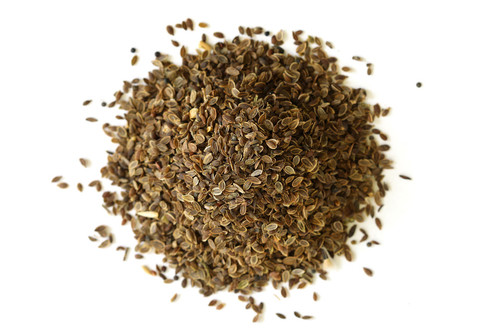Anethum graveolens, or dill, is a hardy annual herb from the Apiaceae family, native to the Mediterranean and southern Russia. It features feathery leaves and yellow flower umbels, thriving in moist, well-drained soil under full sun, with flavor intensified by heat or drought. Historically, Vikings called it "dilla" (soothing) and used it to calm infants. Widely cultivated, dill is a culinary and medicinal staple across cultures.
Dill supports digestive health, relieving bloating and gas due to its carminative properties. It also has calming effects, traditionally used to soothe infants.
- Dill Weed (Leaves): The aromatic, feathery leaves are used to season soups, sauces, and pickling recipes. In herbal practices, infusions or extracts support digestion and ease bloating, offering a mild, fresh flavor for culinary and medicinal uses.
- Dill Seed (Fruit): The flat, oval, dark brown fruits (not true seeds) have a stronger, slightly bitter taste. Used in pickling, baked goods, and to flavor vinegars or liqueurs, their infusions or extracts also aid digestion and relieve gas, with a robust flavor suited for bold dishes.
Precautions
No known precautions. We recommend that you consult with a qualified healthcare practitioner before using herbal products, particularly if you are pregnant, nursing, or on any medications.
No known precautions. We recommend that you consult with a qualified healthcare practitioner before using herbal products, particularly if you are pregnant, nursing, or on any medications.
This information has not been evaluated by the Food and Drug Administration. This product is not intended to diagnose, treat, cure, or prevent any disease. For educational purposes only.










